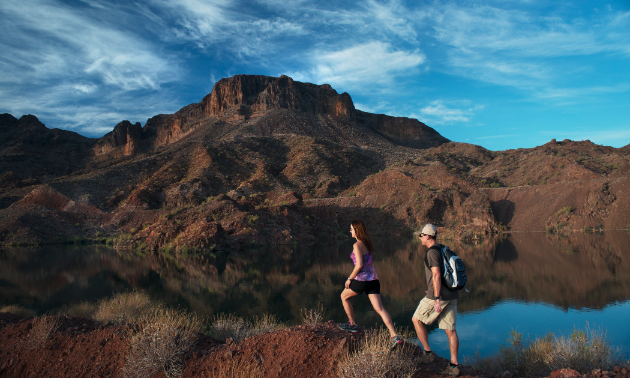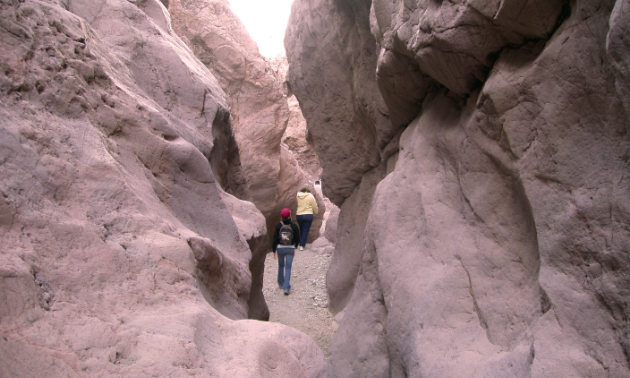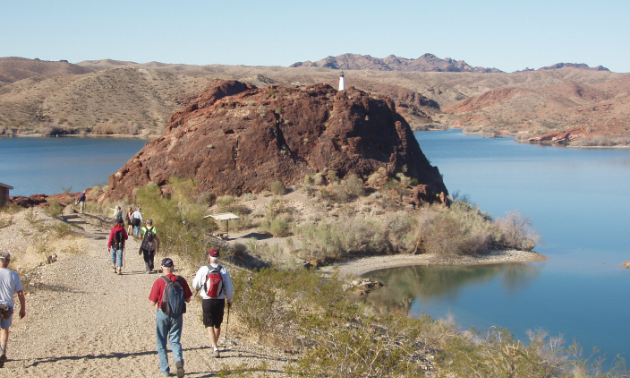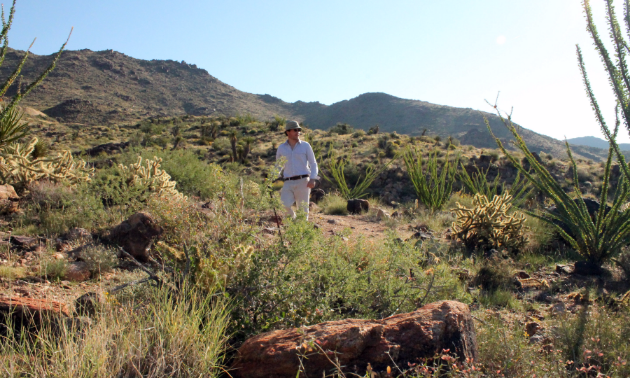Experience some of Arizona’s best hiking in Lake Havasu
Lake Havasu is a hiker’s paradise in the spring, fall and winter with numerous stunning hikes within a short distance of the city centre.

The city of Lake Havasu is situated on the eastern shore of the lake on the Colorado River border of California and Arizona. The lake itself is a large reservoir behind Parker Dam, which was built between 1934 and 1938. The city was established in 1963 by Robert P. McCulloch, Sr. and is home to the historic London Bridge, dismantled and relocated to its current location in 1967. Lake Havasu is a popular tourist destination because of the calm waters, amazing beaches and sunny desert weather providing more than 300 days of sunshine each year. It is also the perfect place for a walking and hiking getaway during the “shoulder season”—although there really isn’t a shoulder season in Lake Havasu!
The Crack in the Mountain Trail
The Crack in the Mountain Trail is located just outside of Lake Havasu and can be accessed by car. The trail is not too difficult and for the most part is a nice walk, which can be enjoyed by a variety of ages and ability levels. “It’s called Crack in the Mountain because it goes through a slot canyon," "It is very narrow. If you are able, you can walk around in it,” said Jan Kassies, the director of visitor services for the Lake Havasu City Visitors Bureau.

This scenic trail through one of the most famous slot canyons on the Lower Colorado River ends at the lake beside Balance Rock, which is a large rock mass balanced on a narrow column of stone. The Balance Rock is a sight to see in itself. The trail is esthetically pleasing with a difficulty rating of moderate with some climbing, but there are also some blue and green trails established around some of the more difficult sections.
It is important to monitor weather conditions as water may block your passage through the crack for several days after a rainfall. Check the bulletin in the parking lot or with returning hikers to find out conditions.

Cupcake Mountain Trail
Don’t be fooled by the name—this trail is only for seasoned hikers who like a good challenge. “If you want a very difficult hike on the other side of the lake, you can try Cupcake Mountain Trail, but you have to be in good shape," said Kassies. "It's quite difficult and you need a four-wheeler to get there." The trail is labelled as strenuous with long steep sections and some scrambling at the top for the last half-mile.

Cupcake Mountain itself is Lake Havasu’s most famous natural photographic backdrop and the views from the top are spectacular. The mountain received its name from the Army Corps of Engineers in the 1940s after a dusting of snow gave the top of the mountain a frosting-like appearance. The trail was established in 1986 by Tim O’Connor, who established many of the trails in the area.
The hike is 4.6 miles long (7.4 kilometres) and should take approximately five to six hours to complete. Cupcake Mountain comes into view after the first 1.4 miles (2.2 kilometres) after hiking around the first mountain, called Indian Nose. It is important to remember to carry lots of water and wear sun protection while hiking in the Havasu area.






